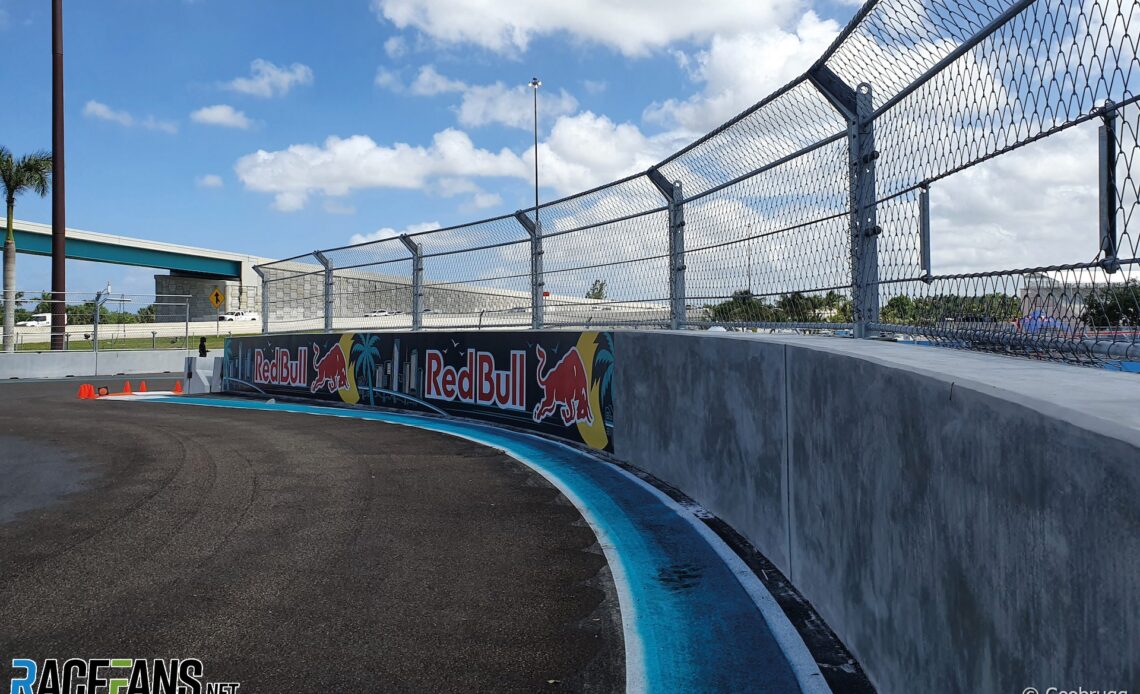In the round-up: The Miami International Autodrome constructors say the sequence between turns 13 and 16 is designed to create overtaking opportunities through driver error.
In brief
“Jekyll and Hyde” Miami track will force errors from driversClive Bowen, the founder and director of Apex Circuit Design, the team behind the Miami Grand Prix track, explained how they intend to challenge drivers throughout the 5.4-kilometre lap.
“We had to ensure that we had a race track that had enough of a ‘Jekyll and Hyde’ personality,” said Bowen. This included “sections with [gradient] change and a lot of traction which require a soft set-up on a car, then some super high-speed sections where you want to have a stiff setup to get the best from aero performance and therefore lateral grip through the corners.”
The positioning of some barriers has been configured to provoke mistakes from drivers, he added. “The sequence from turn 13 through to 16 is where we thread the needle under the turnpike overpasses,” said Bowen. “Going into turn 14, you don’t see the apex of turn 15 until you’re on the apex of turn 14. It’s what we call a ‘mistake generator’ so the opportunity for drivers to gain position because somebody in front overdrives is quite high.”
Downforce levels will be hardest setup item to choose – Perez
Track data: Miami International AutodromeSergio Perez said he believes the biggest challenge for teams this weekend will be choosing what level of downforce to run on the unfamiliar Miami track.
“I found the new circuit fun on the simulator and it can potentially be a good place for racing with those very long straights,” Perez said. “I think choosing the right downforce level will be the biggest challenge for all the teams.”
He welcomed F1’s addition of a second race in the USA this year. “It is great that the calendar is expanding more in America, which is a lot closer to home for me and one day I might end up living there,” added…

